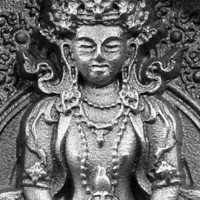
Tsa tsas, with their origins in Sanskrit, are a typical Tibetan Buddhist art form. They are actually votive tablets in Tibetan Buddhism, usually clay impressions made with a metal mould containing the hollowed, reversed image of a deity, a stupa or other sacred symbol.
As holy objects, tsa tsas can be found inside stupas, prayer wheel niches, holy caves and monastery altars, or beside holy mountains, holy lakes and other holy sites. Small tsa tsas can be put inside a portable amulet shrine (called a ghau in Tibetan) and used as amulets by those travelling.
Tibetan people believe that making tsa tsas is a merit-accumulating action. Tsa tsa-making is a compulsory skill for monks in Tibetan monasteries. After the tsa tsa is moulded, they are dried or fired to harden them. Only after being ritually empowered can they be used as holy objects!
One can also make 100,000 tsa tsas as one of the preliminary practices prior to receiving higher tantric initiation.








